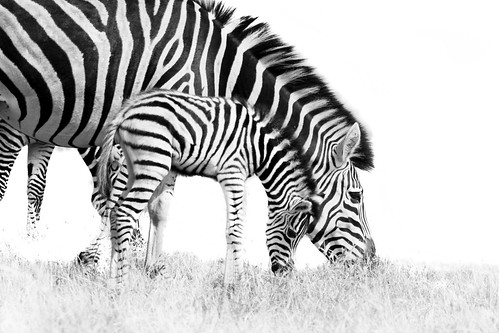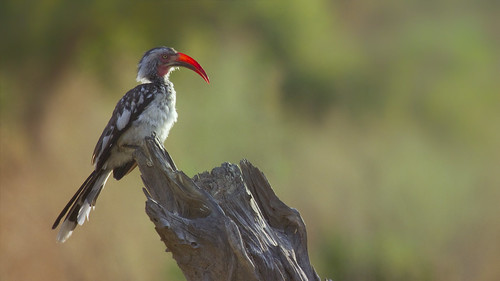
Zebras lend themselves very well to black and white photography…

Not many are fond of this kind of photos. But I suggest you do take a look at the large size in full screen mode.

There is something primordial about a croc lurking in the shade of trees in a placid river…
The binomial name for the Nile Crocodile; Crocodylus niloticus is derived from the Greek kroko (“pebble”), deilos (“worm”, or “man”), referring to its rough skin; and niloticus, meaning “from the Nile River”. The Nile crocodile is called Timsah al-Nil in Arabic, Mamba in Swahili, Garwe in Shona, Ngwenya in Ndebele, Ngwena in Venda, Kwena in Sotho and Tswana.
[edit]
The Nile crocodile is the top predator in its environment, and is responsible for checking the population of species like the barbel catfish, a predator that can overeat fish populations that other species, like birds, depend on. The Nile crocodile also consumes dead animals that would otherwise pollute the waters. The primary threat to Nile crocodiles, in turn, is humans. While illegal poaching is no longer a problem, they are threatened by pollution, hunting, and accidental entanglement in fishing nets.

I have some pictures of the Leopard in my portfolio but this one was for whom we waited the longest. It was sleeping when we spotted it first. There was a herd of Impalas grazing very near to the Leopard and our guide said that a hunt is very likely even though at that time the predator appeared to be at his laziest best…
We waited almost for 45 minutes before he even looked up, the light was rapidly fading. With no movement we grew relaxed as well and were not paying close attention. Suddenly the Leopard was no longer there on the tree. It had crawled down and was crouching very near the Impalas, we could barely see it. After studying the scene for a while it just got up turned back and walked away! At least that is what we felt but it in fact had circled around and was directly in front of our Land Rover about 30m. Before anyone of us realized it was charging at one of the fawns. The fawn ran straight towards the Land Rover with Leopard in pursuit, fawn got beneath our vehicle and Leopard screeched to a halt! Looking sullenly at us. The whole thing happened so fast that even with 4 photographers none of us got a decent shot of the chase but it was an awesome adrenaline rush none the less…
Yeah! it may sound like a “one that got away” story but this one did happen – shall process the blurry ones and add to the post soon 😉

Also known as the Asiatic wildcat is one of the most endangered of the small “big cats” habitat loss and excessive hunting in the past for its characteristic spotted pelt has led to decline in this cat’s numbers in the wild. As with other wild cats, the risk of loss of genetic purity also looms large through interbreeding with feral and domestic felines.
Friends have had great success in photographing this very shy Wildcat but I have only managed to get glimpses of it in the past. This early morning shot is the best I have in my collection.

Red-billed Hornbill (Tockus erythrorhynchus) is a relatively small species of hornbill found in savanna and woodland of sub-Saharan Africa. Zazu, a character in the animated film The Lion King, is a Red-billed Hornbill. He is also featured in the sequel, The Lion King II: Simba’s Pride and the mid-quel The Lion King 1½.